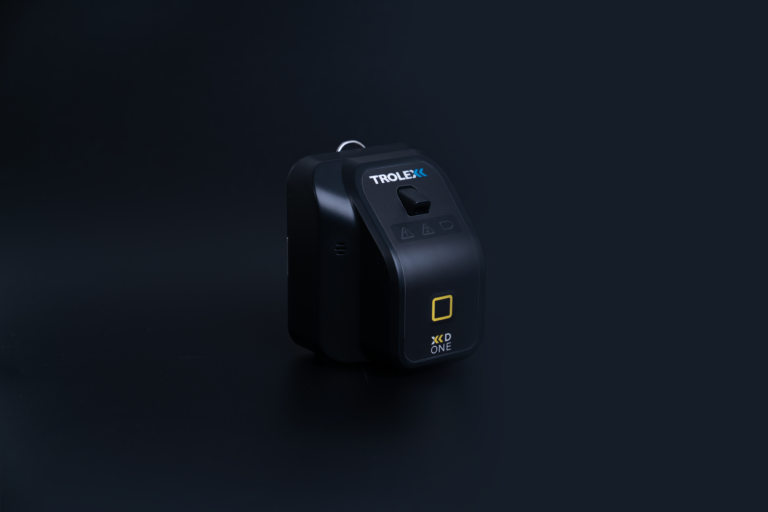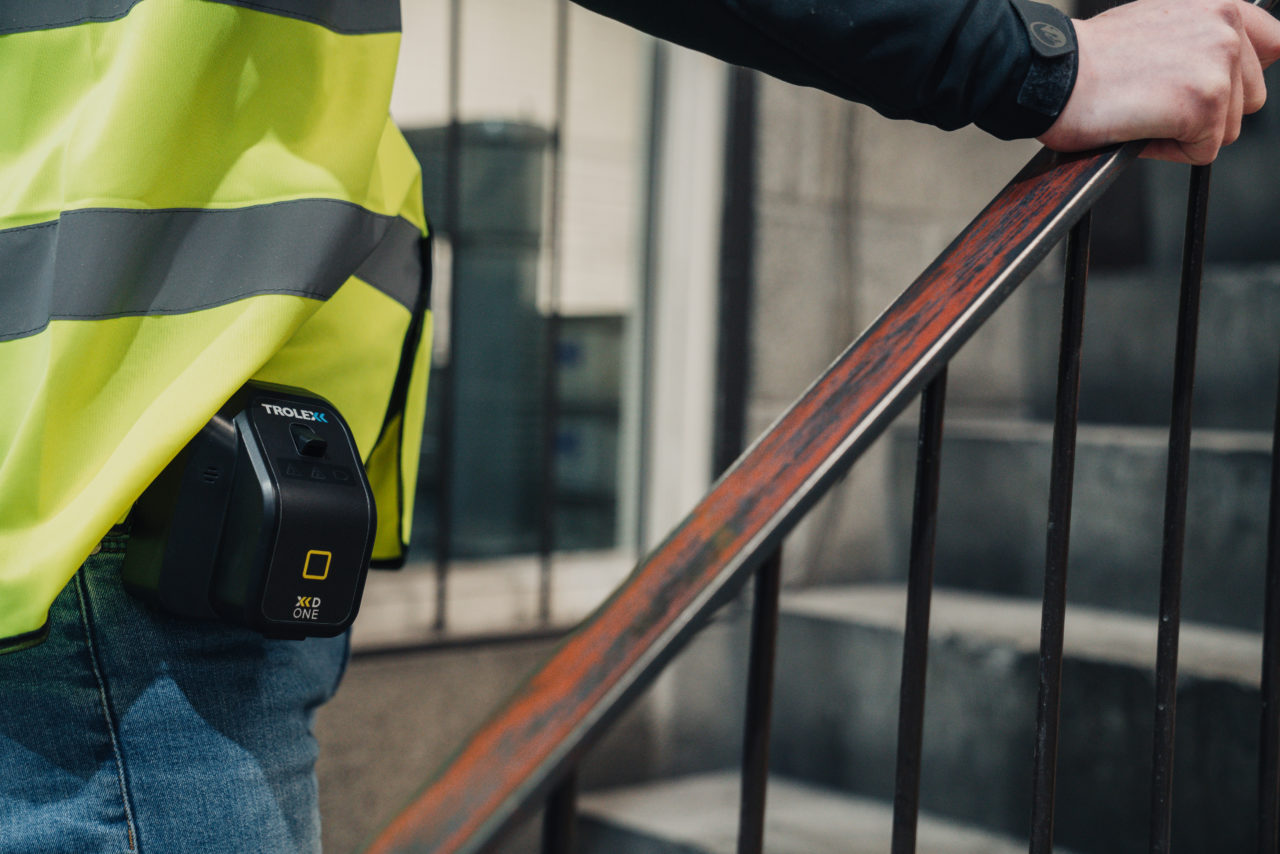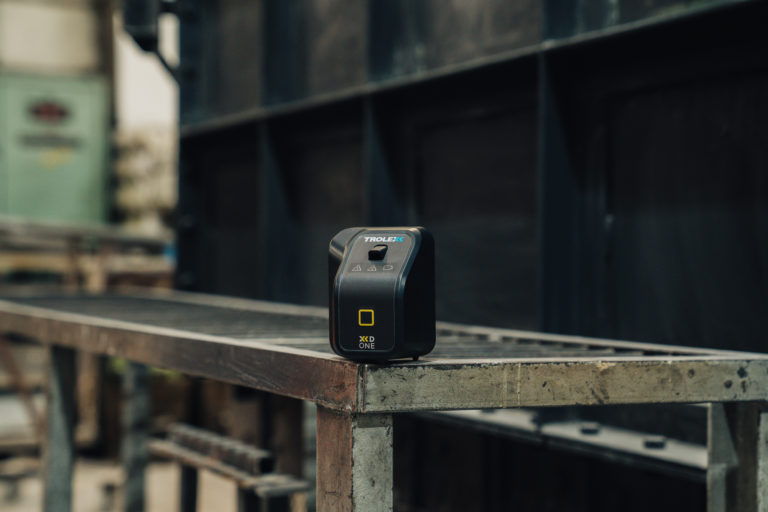We’re excited to bring to the market our XD1+ Personal Dust Monitor as a connected dust monitor with the Reactec Ecosystem.
The Reactec Ecosystem for workplace exposure to hazards includes an IoT gateway, Reactec’s workplace wearable RASOR for secure data transmission, an RFID identity card to personalise the collected dust data and the cloud-based Reactec Analytics software for informative and automatic data dissemination.
RASOR is a communications gateway with integrated SIM and GPS technology to gather data seamlessly from the XD1+ and present it live, personalised and position tracked data to remote line managers via a browser.
Our XD1+ Personal Dust Monitor can be easily connected with RASOR in two different modes for both single worker use and for pairing a number of XD1+ devices to a RASOR connected in hub mode, allowing for flexibility when working, but still providing vital information of worker exposure which can be analysed and interrogated on Reactec’s Analytics platform.
By leveraging revolutionary real-time personal monitoring technology with location tracking, automatic data collection and powerful data analytics, employers can now control their worker’s exposure to harmful respirable dust like never before and reduce these occupational diseases thanks to connected XD1+ and Reactec Ecosystem.
Check our guide for details on the key modes of pairing XD1+ with the Reactec Ecosystem, a run-through of how to connect your XD1+ in these different modes and the benefits of each type of connectivity.
It’ll come as no great surprise: the more hassle something is, the less people want to do it. A simple fact, from technology, to sport, to entertainment, to business, the ‘more trouble than it’s worth’ factor relates to every aspect of life. There’s even a model that represents it. Fred Davis’ 1986 Technology Acceptance Model (TAM) designed to measure the adoption of new technology based on customer attitudes.
The time, the trouble and the expense of ‘high maintenance’ dust monitoring equipment goes a long way to explaining why it has never really been adopted to the scale that workers truly deserve.
Traditional dust monitoring equipment:
– Takes too much time to deploy
– Needs continual fiddly maintenance
– Costs too much money
– Is often too big, too heavy and too fragile
– Is too much hassle
Which is why we’ve worked so hard to develop, manufacture and distribute the Trolex XD ONE Portable Dust Monitor.
The new, easy-to-use, low maintenance, reliable and accurate personal dust monitor; more like a PPE product than a traditional high-maintenance dust detector or analyser.
Let’s take a look at the Trolex XD ONE Portable Dust Monitor, in particular its ease of use, deployment and maintenance, against the leading products already on the market.
Let’s see how they compare – or more realistically – how they don’t. Because, as you’ll see for yourself, the advantages of the XD ONE are so many and so significant that any genuine comparisons are few and far between.

How easy is the unit to wear, use, and get working?
Trolex XD ONE Portable Dust Monitor: Pick it up. Switch it on. Off you go…and go…and go.
Compared to:
TSI SidePak AM520/520i: Larger and 30% heavier than the XD ONE. Requires different impactors for different particulate sizes that need to be recalibrated as they’re swapped out. Fiddly tube clipping required.
SKC HAZ-DUST IV: Three-times heavier than the XD ONE at 1.4 kg and much larger. Base unit + tube + sampling head clipped near breathing zone with separate filter unit.
CASELLA APEX 2: Requires a clean environment and tweezers to handle the filter. Flow meter and calibration adapter kit not included and needs to be purchased separately.
Nanozen DustCount 9000: Base pump unit with impactors, tube to head unit with filter in cassette and sensor. The usual set-up with the usual problems. Don’t forget to remove the red cap before switching on or you’ll damage the unit!
TM DATA II: Much bigger and 20% heavier.

What kind of burden does the typical maintenance cycle put on the user?
Trolex XD ONE Portable Dust Monitor:
– Five seconds for automatic or on-demand self-testing
– 60 seconds of compliance every six months
– No return-to-base, complex set-up or calibration
– That really is it. PPE for the real world
Compared to:
TSI SidePak AM520/520i:
– Recommended annual return-to-base
– Impactor maintenance – eight-step process
– “Impactor should be cleaned prior to each use.” – TSI website
– Cyclone maintenance – complete disassembly and reassembly
– Separate filter unit required to perform daily calibration check
– Multiple monitors required to bump test in the field. It is very difficult to generate a known aerosol concentration for a ‘bump test’ in the field without very sophisticated equipment. With use of multiple SidePak Monitors running them side by side…if all instruments are within 20% of each other, they are all functioning properly’ TSI website
SKC HAZ-DUST IV:
– 81-page manual
– “Sensor optics to be checked every 48 hours when used in a 2-3 mg/m³ TWA environment and on a weekly or monthly basis in less contaminated environments” – eight-step cleaning process using a bespoke kit
– Flow rate must be checked every time a new gravimetric filter Is used – six-to-eight-step procedure
– Calibration every month as a minimum/when dropped – minimum 11-step procedure
– Annual third-party calibration required
– 19 accessories
CASELLA APEX 2:
– Annual return to base/or after 2,500 hours, whichever is sooner
– Loaded filter or battery voltage reductions affect air flow speed requiring variable flow to be monitored at all times. In-built pressure and temperature compensation, pulsation control, high back pressure and long battery life presented as great ‘features’ of their product when in fact they’re all only necessary because of the antiquated filter-based methodology used
– Inlet filter to be replaced every three months (more often in challenging environments) four-stage process
– Different filters are required for different applications and this needs to be worked out
Nanozen DustCount 9000:
– Recommended annual return to base
– Impactor has to be oiled and cleaned – fiddly with small pipettes of special oil and a three-minute wait before re-assembling and cleaning with a special alcohol substance
– New filters need to be inserted into the filter cartridge. A screwdriver, clean area and tweezers required
– Pump needs to be calibrated. Separate filter unit required to do this
TM DATA II:
– Special calibration kit required
– Measuring chamber cleaned with oil-free pressurised air or with soft dry brush
– Light trap covers can be screwed out so that dust particles can be blown out of the light trap
– Lenses in front of the diodes can be cleaned with Q-tip wetted in alcohol
– Internal calibration and zero-point adjustments should be carried out on regular intervals
– Maintenance and repair only by qualified personnel
The Trolex XD ONE Portable Dust Monitor – a device that’s so easy to use and maintain, so useful, that it’s more hassle to NOT use it.
And when you start to tot up the cost benefits of the XD ONE over its competition, it’s hard to know where to start.
– The time saved in setup
– The hours of maintenance saved
– The savings in extra disposable kit
– Improved site performance
– Lower worker absenteeism
– Recruitment cost savings
– Reduced legal and litigation costs
Perhaps the greatest benefit though is one that can’t be measured in monetary terms – the opportunity to prevent your workers from suffering avoidable, life changing disease, and premature death. Priceless.

There’s a well known sales mantra that goes: “People don’t buy the best – they buy products they can understand the fastest.”
The same principle applies to technology adoption.
People don’t buy the best – they buy products that are easiest to adopt.
The great thing here is that not only are Trolex products the easiest to adopt, they’re more accurate, far simpler to maintain and significantly cheaper to use than anything else in the market. The best.
So, when the question is:
‘How do we best encourage people to use dust monitoring equipment and to keep using it because it’s easy to deploy and easy to maintain?’
The answer is as simple as it’s effective.
The Trolex XD ONE Portable Dust Monitor.
If you’d like to find out how real-time dust monitoring can help improve your safety processes, get in touch today.